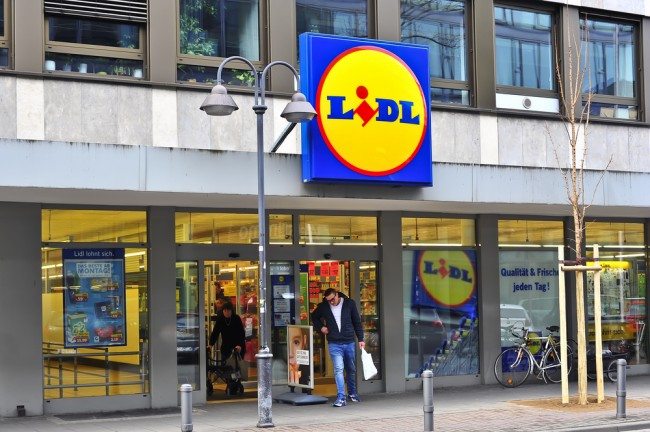The German discounters now account collectively for 11.7 per cent of the UK grocery market, according to the latest figures from Kantar Worldpanel. Lidl grew sales by 15 per cent during the period, making it the fastest growing retailer and increasing its share of the market to 4.9 per cent.
Aldi’s sales were up 14.3 per cent, taking its share to 6.8 per cent. The supermarket is targeting a 10 per cent portion of the market, reports City AM.
Iceland recorded its strongest sales growth since March 2013, with a 9.8 per cent year-on-year rise, which Kantar said was “thanks in large part to the supermarket’s fresh and chilled lines” which now account for more than a quarter of sales at the retailer.
The big four
Among the big four, Morrisons was the only supermarket to grow sales during the 12 weeks, with a 0.3 per cent rise, but it still lost some of its market share, slipping by 0.1 percentage points to 10.4 per cent.
Meanwhile, Tesco’s sales were down 0.4 per cent, Sainsbury’s fell by 0.7 per cent and Asda’s decline by 1.8 per cent.
Waitrose, which was crowned the UK’s best supermarket earlier this year, now holds 5.1 per cent of the market, after recording sales growth of 0.3 per cent as it continued a run of unbroken growth since March 2009.
Inflation
Kantar highlighted the effects of inflation, which “shows no signs of abating”, although the firm advised that rising prices in markets such as butter, fish, tea and skincare have been partially offset by falling prices in categories including crisps, bacon, chocolate and fresh poultry.
“The price of everyday goods is up by 2.3 per cent compared to this time last year, and rising prices cost the average household an additional £21.31 during the past 12 weeks,” said the group’s head of retail and consumer insight, Fraser McKevitt.
“Despite rising prices, we’ve seen shoppers’ minds turn to healthy eating after the excess of the festive period and before the temptation of Easter.
“Greater demand for gluten or dairy-free products, particularly from younger shoppers, has boosted the ‘free from’ category by 36 per cent year-on-year. In fact, 54 per cent of the population purchased a ‘free from’ product during the past three months – that’s 3.3m more people than last year.”


